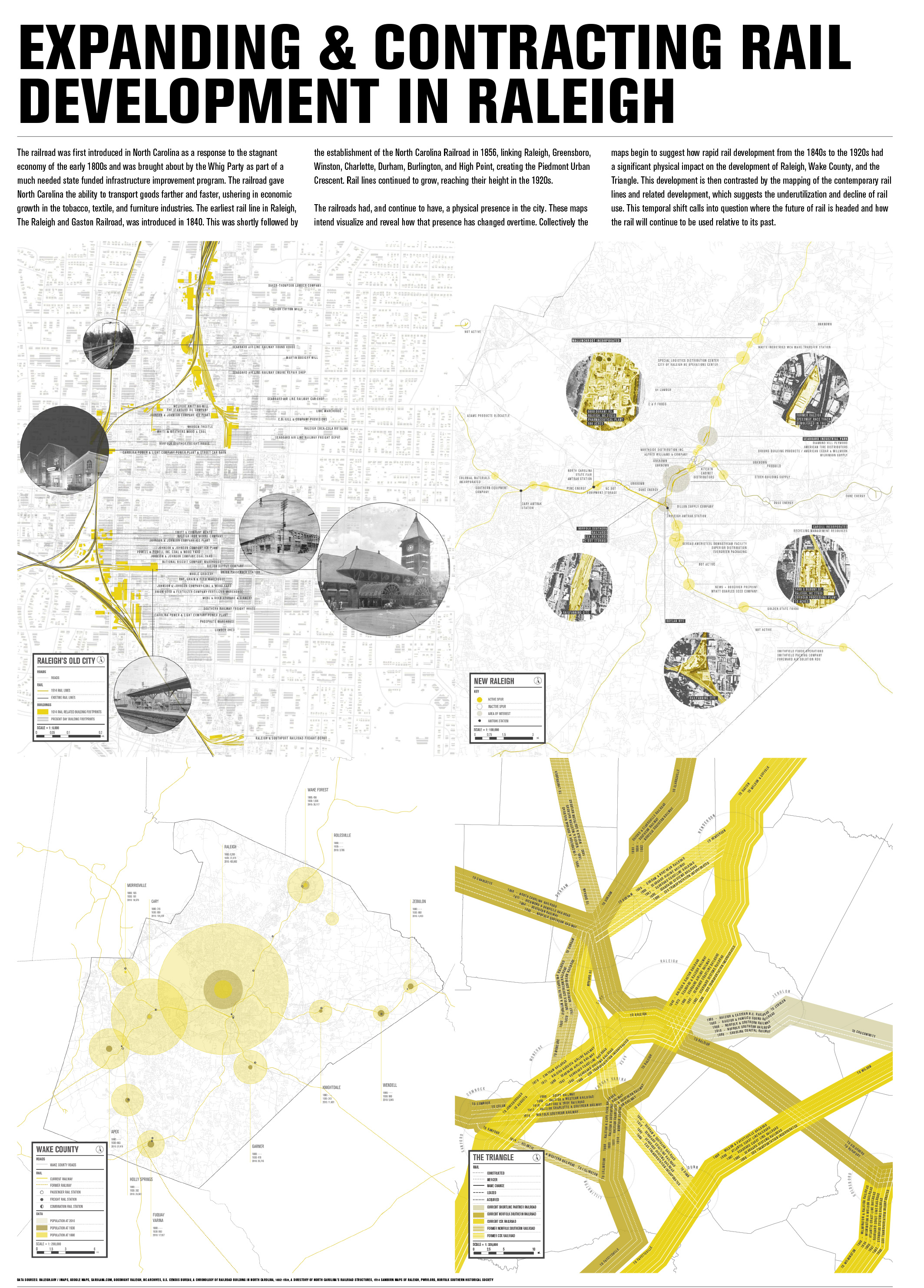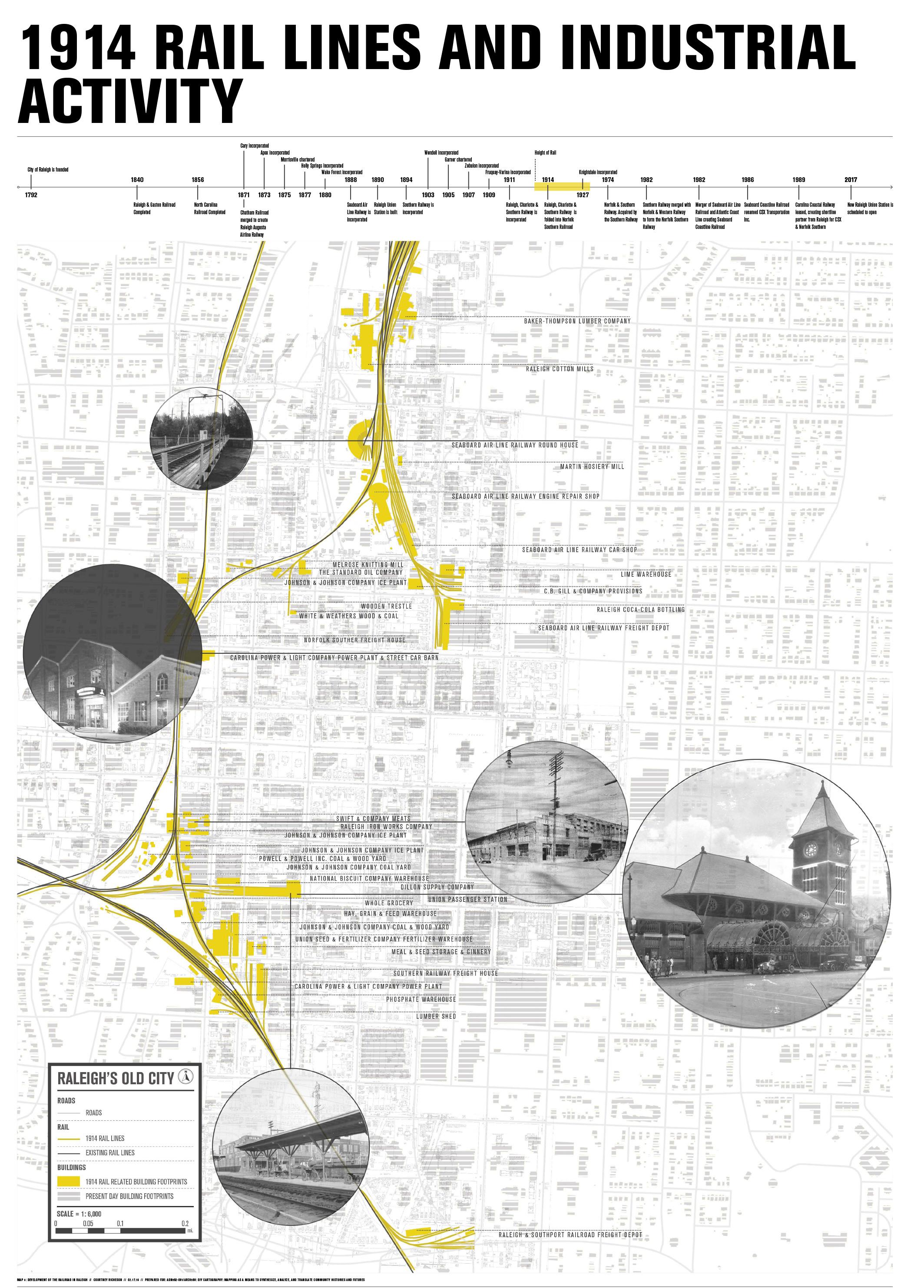
 EXPANDING & CONTRACTING RAIL DEVELOPMENT IN RALEIGH & 1914 RAIL LINES AND INDUSTRIAL ACTIVITY
EXPANDING & CONTRACTING RAIL DEVELOPMENT IN RALEIGH & 1914 RAIL LINES AND INDUSTRIAL ACTIVITY
The railroad was first introduced in North Carolina as a response to the stagnant economy of the early 1800s and was brought about by the Whig Party as part of a much needed state funded infrastructure improvement program. The railroad gave North Carolina the ability to transport goods farther and faster, ushering in economic growth in the tobacco, textile, and furniture industries. The earliest rail line in Raleigh, The Raleigh and Gaston Railroad, was introduced in 1840. This was shortly followed by the establishment of the North Carolina Railroad in 1856, linking Raleigh, Greensboro, Winston, Charlotte, Durham, Burlington, and High Point, creating the Piedmont Urban Crescent. Rail lines continued to grow, reaching their height in the 1920s.
The railroads had, and continue to have, a physical presence in the city. These maps intend visualize and reveal how that presence has changed overtime. Collectively the maps begin to suggest how rapid rail development from the 1840s to the 1920s had a significant physical impact on the development of Raleigh, Wake County, and the Triangle. This development is then contrasted by the mapping of the contemporary rail lines and related development, which suggests the underutilization and decline of rail use. This temporal shift calls into question where the future of rail is headed and how the rail will continue to be used relative to its past.
